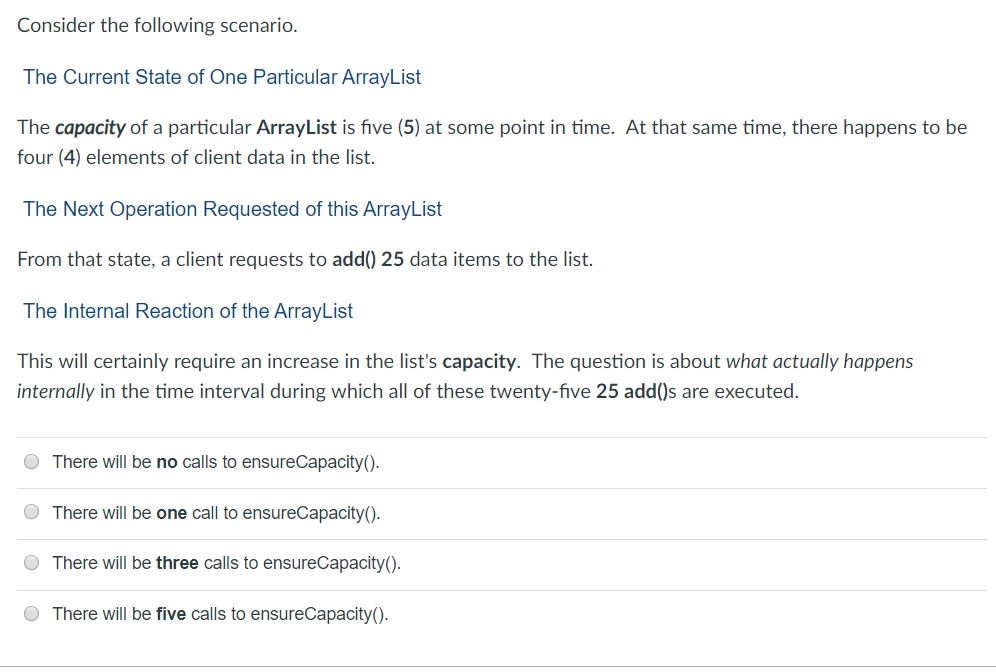Answered step by step
Verified Expert Solution
Question
1 Approved Answer
This question is based on our implementation of ArrayLists , which is typical. Recall that our implementation, internally calls a helper method ensureCapacity() whenever extra
This question is based on our implementation of ArrayLists, which is typical. Recall that our implementation, internally calls a helper method ensureCapacity() whenever extra storage space is needed. Some details of this operation are universal for theoretical reasons. We may not have covered the theoretical reasons yet, but we have studied the implementation of ensureCapacity(). Below is a reminder of the method definition and an example call to ensureCapacity():
public boolean add(E x) { if( mObjects.length == mSize ) ensureCapacity(2*mSize + 1); mObjects[mSize++] = x; modCount++; return true; } public void ensureCapacity(int minCapacity) { if (mObjects != null) { if( minCapacity 0) System.arraycopy(srcArray, 0, mObjects, 0, mSize); }

Step by Step Solution
There are 3 Steps involved in it
Step: 1

Get Instant Access to Expert-Tailored Solutions
See step-by-step solutions with expert insights and AI powered tools for academic success
Step: 2

Step: 3

Ace Your Homework with AI
Get the answers you need in no time with our AI-driven, step-by-step assistance
Get Started


